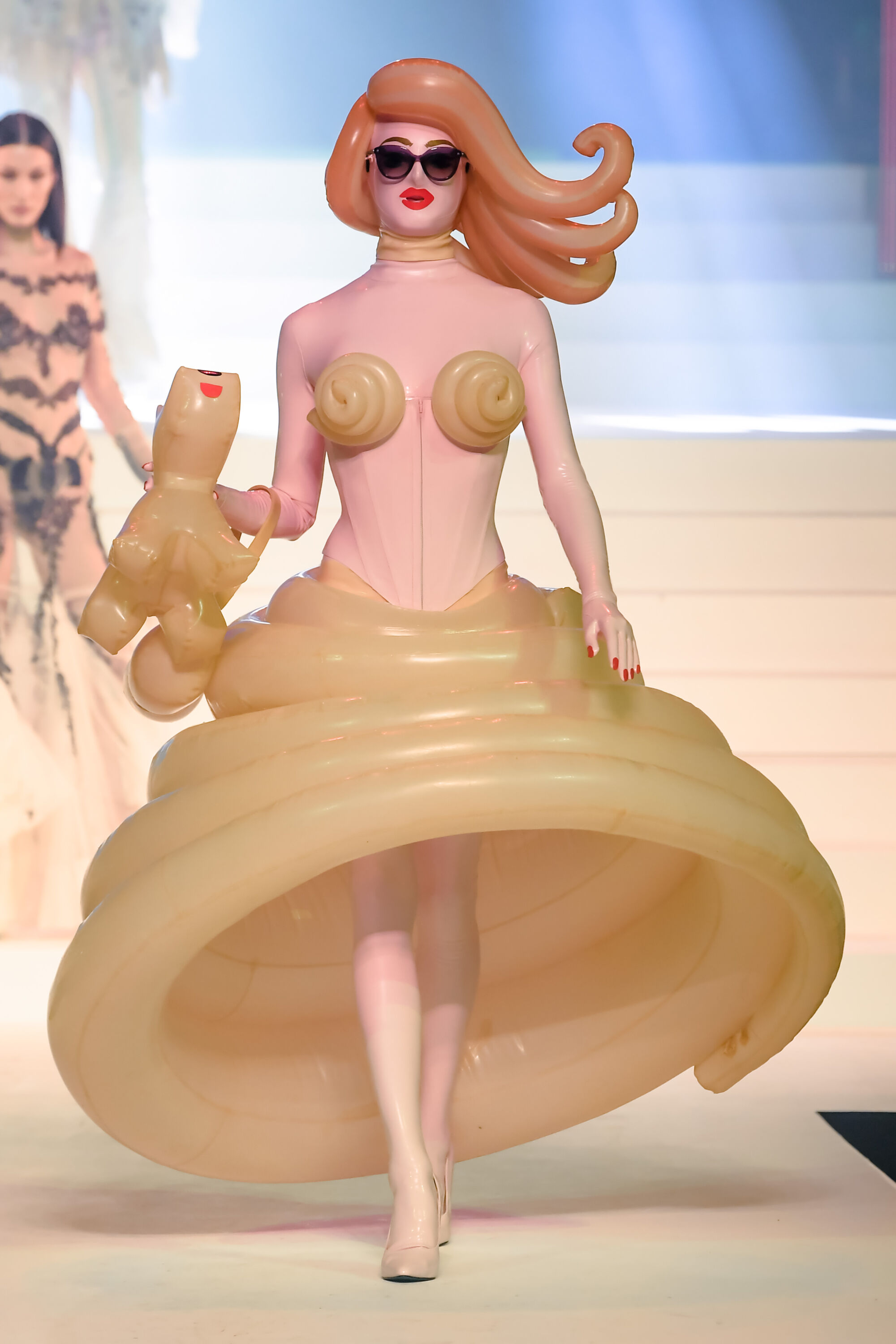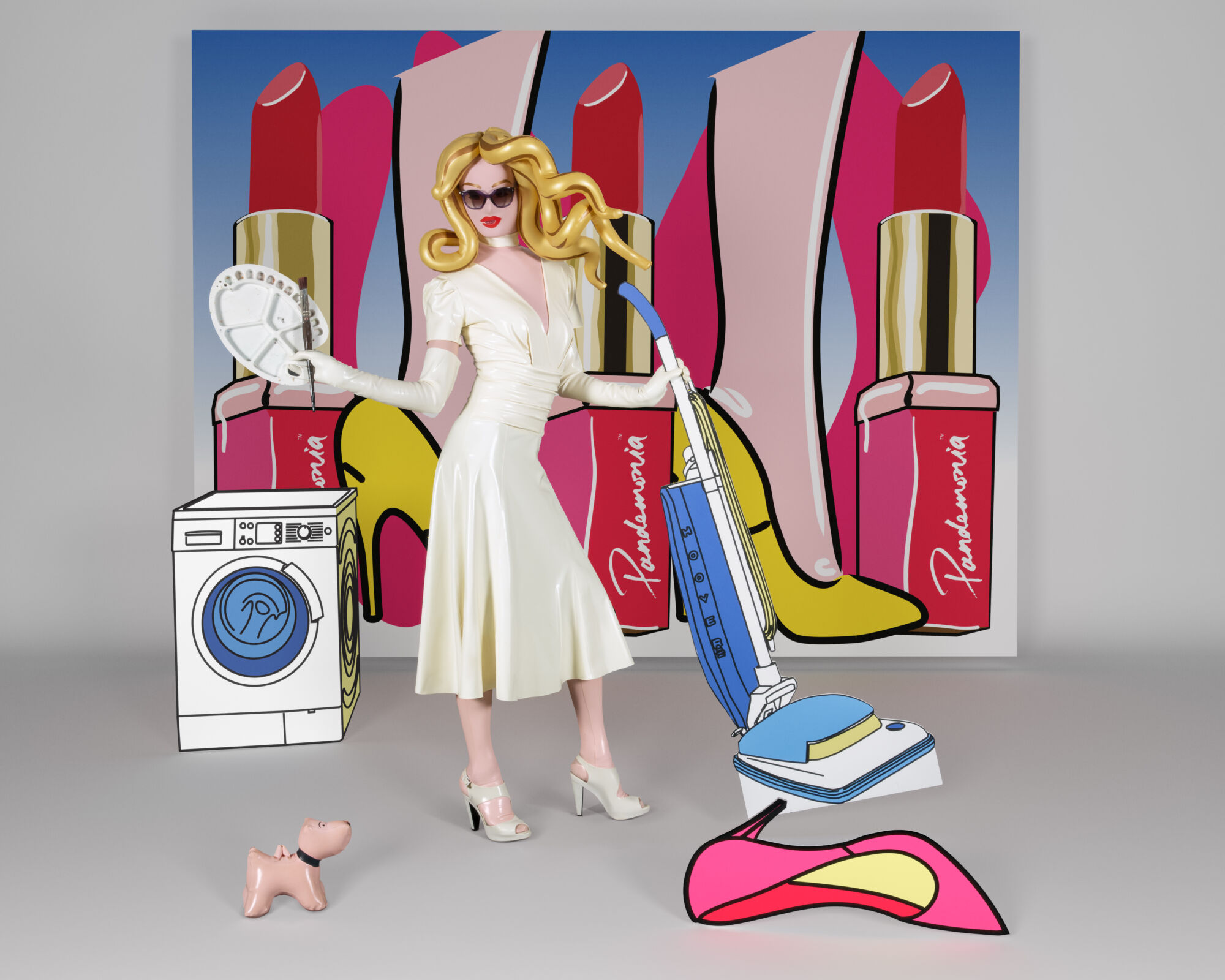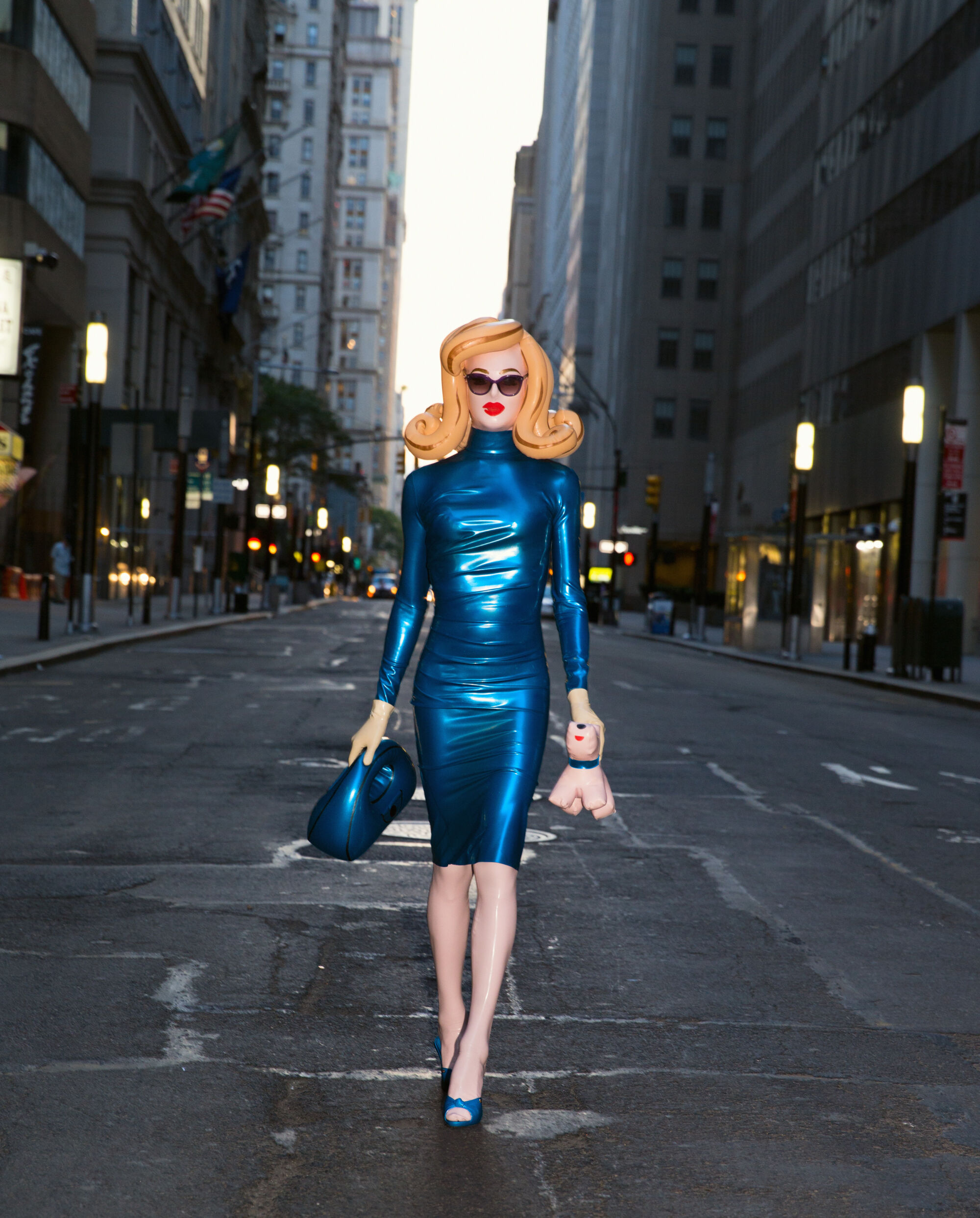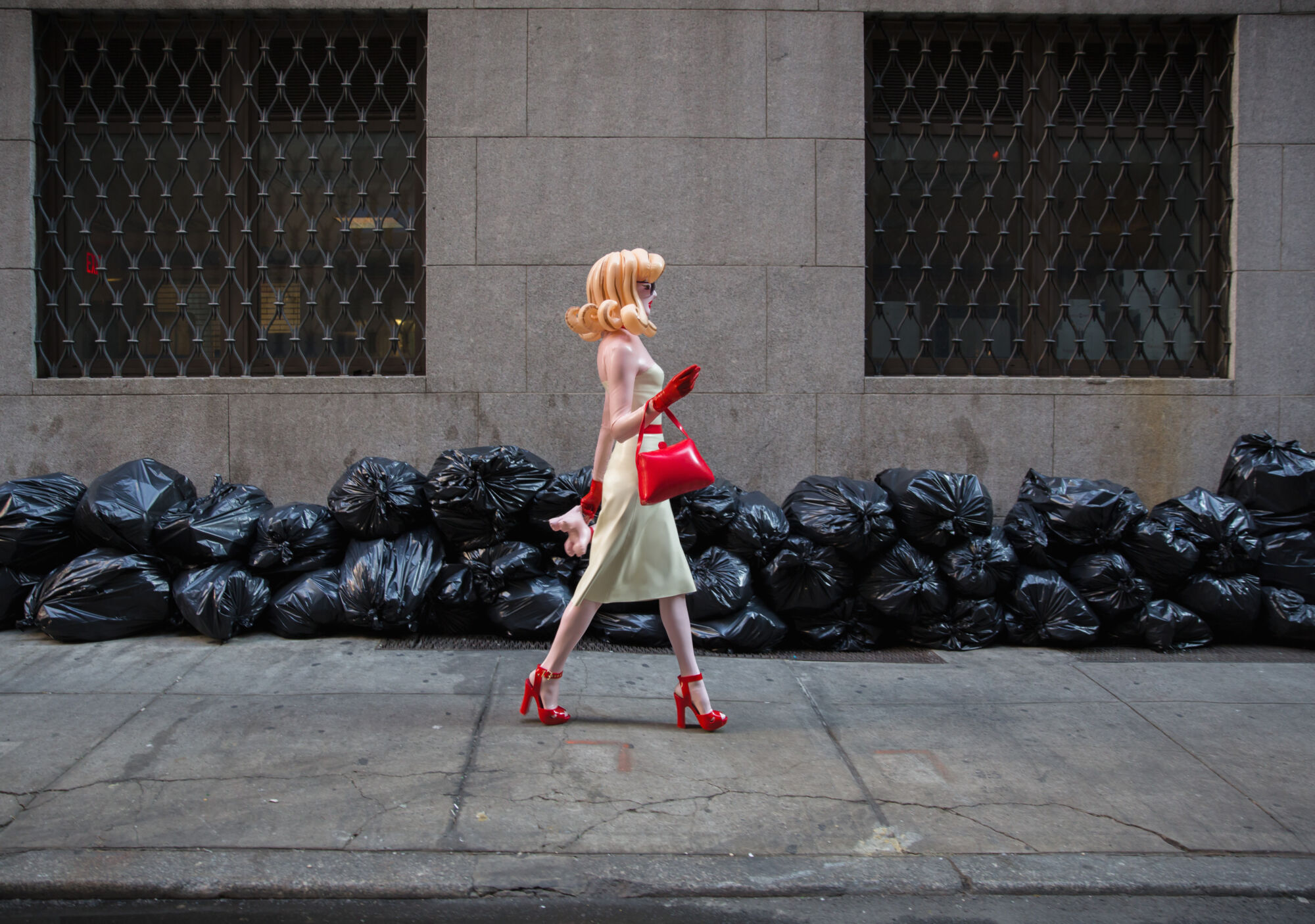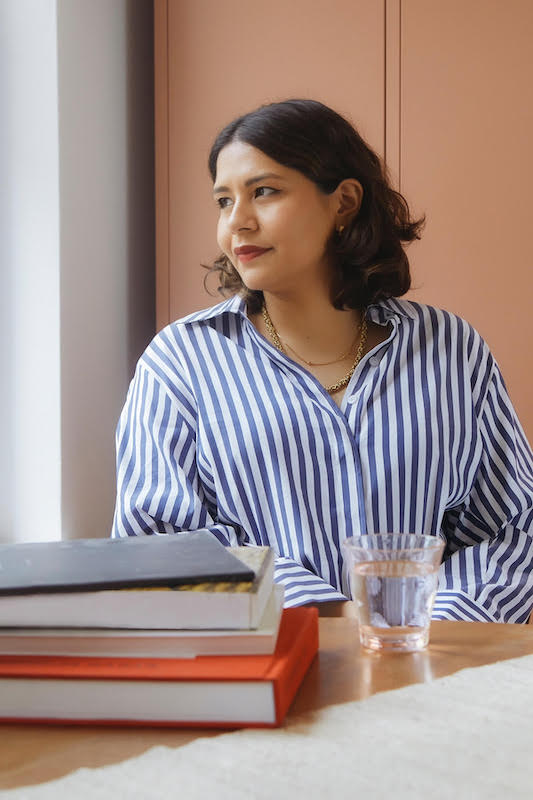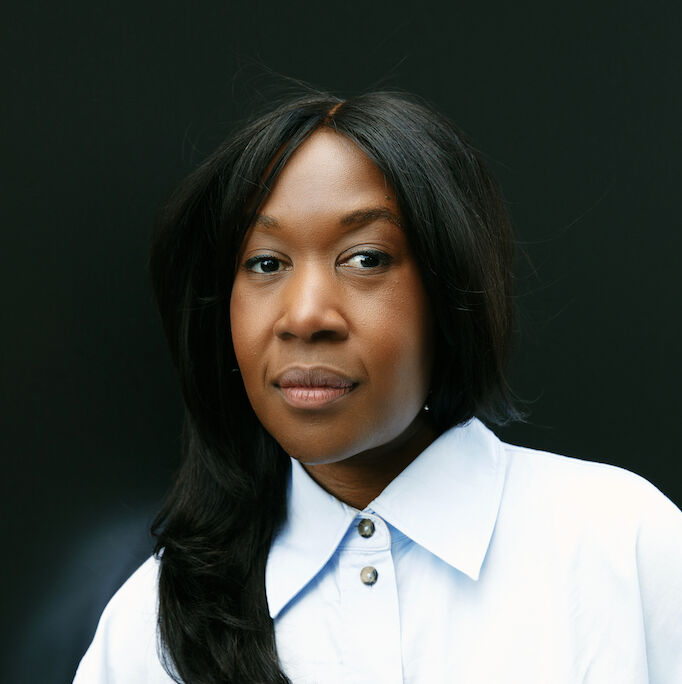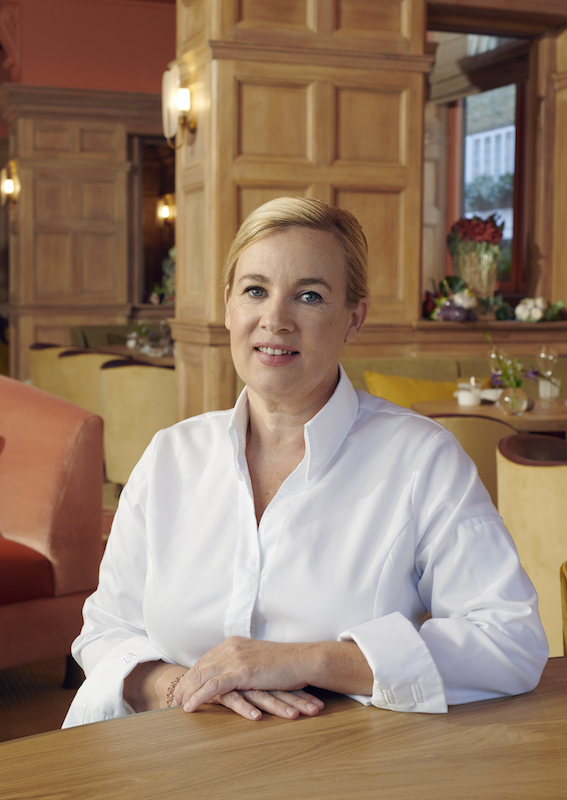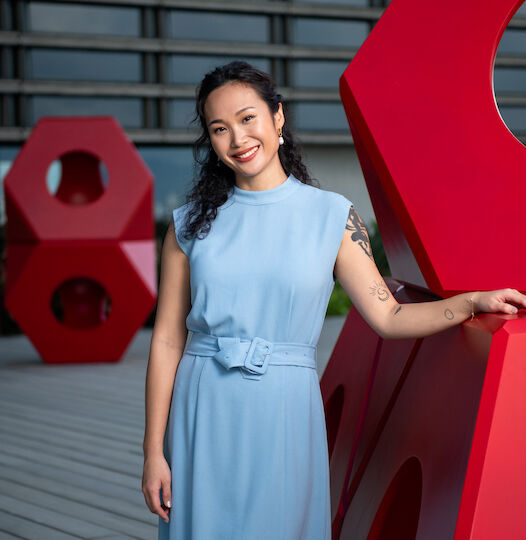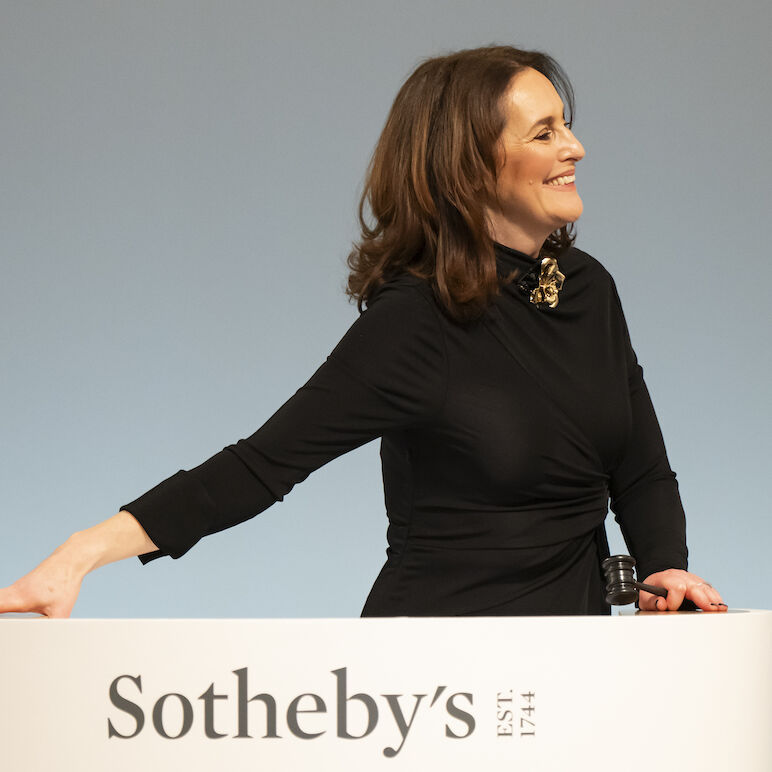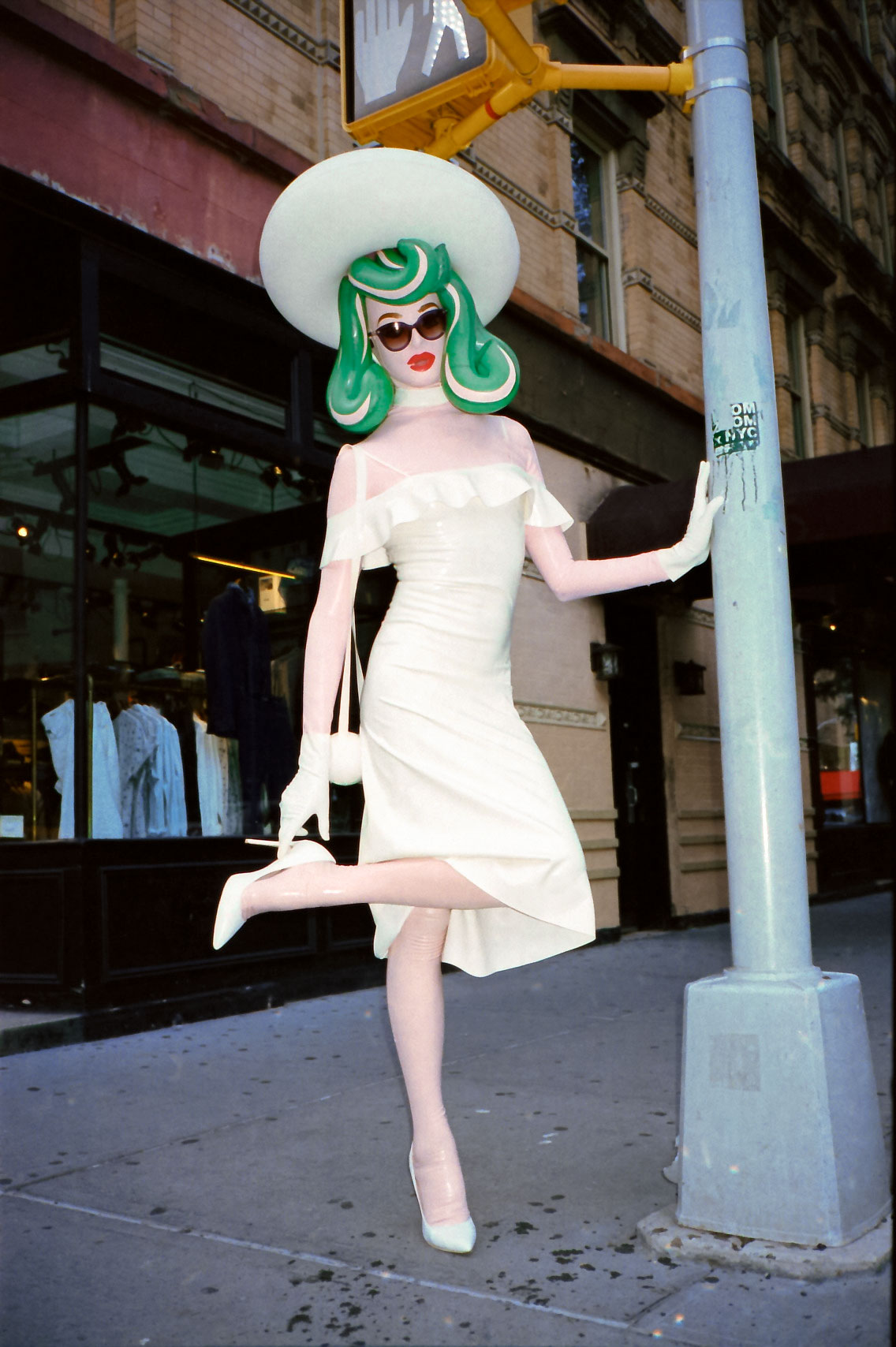

Interview Pandemonia: The Myth, The Legend
Beneath her polished latex exterior – constructed from symbols and archetypes – she’s like a modern-day Trojan horse, promoting discourse from within and providing a commentary on 21st century life through a wide range of art, magazines, film and social media. As well as being a permanent fixture (along with her dog Snowy) among London’s art crowd for more than a decade – all seven feet of her – she has also exhibited in London, Belgium and Los Angeles. She’s a pop icon and an artist, and she’s this week’s Monday Muse.
THE WICK: The Wick: Talk us through a typical Monday.
Pandemonia:
I’m a slow riser; breakfast is my favourite meal of the day. Usually, I have fresh waffles with fruit or pancakes, possibly scrambled eggs. I always do chess puzzles while I drink my coffee. (I have one of those mechanical minds that loves solving puzzles.) Then, if there’s time, generally not, I do some yoga.
From 10am onwards, I am in my studio where I design, make or paint new ideas for Pandemonia; time flies by, and there’s never enough of it.
TW: What made you create Pandemonia?
P: I started Pandemonia in the mid-2000s when various factors came together. I was bored with making flat art and wanted to make something physical and psychological. Around me, a change in society, celebrity and technology was converging. Phones had cameras and were connected to the internet; we were all now interlinked through social media. In this uncharted territory, I created an avatar and released her into London society. She was like a walking cartoon, a parody of the world around her. One that could equally work online as offline.
TW: What do you think Pandemonia means to audiences today?
P: The original inspiration has changed slightly over the years, partly because the world has changed, and I have changed. However, today’s world is moving towards Pandemonia; people are now creating virtual versions of themselves. After all these years, my work still has a strong real-life response because I made the virtual real. People are fascinated by magical realism. The underlying premise of one’s self, and our relation to everyone else is as current as ever.
TW: How important is the power of anonymity for your art?
MM:
Pandemonia has a 360-degree persona; she is a media art piece. Somehow, I have managed to keep her character intact over all these years. An alternative identity would make it more mundane. I don’t think people really want to know; after all, isn’t the world already ordinary enough?
I always thought anonymity gives my work the extra dimension of one of those whodunit TV mini-series mysteries. Something the press could have fun with surmising who she might or might not be.
Personally, anonymity gives me freedom. Luckily, I have a wall of separation from that celebrity circuit thing.
“Pop Art is a melange culture, so it makes perfect sense to wear your art.”
Pandemonia
